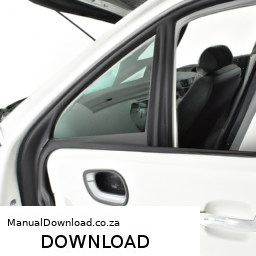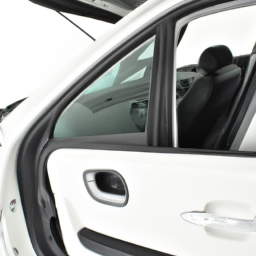
Replacing the tie rod end on a Mercedes Benz ML Class W164 involves several steps and requires specific tools. click here for more details on the download manual…..
- How to Change Language on Mercedes Dash W164 ML350 X164 GL350 and others W164 ML350 Language Change How-to using the confusing steering wheel buttons.
- MERCEDES W164 ML350 550 320 63 AMG 4MATIC REAR DIFFERENTIAL OIL FLUID HOW TO SERVICE CHANGE REPLA… TORQUE SPECS ON PLUGS IS 30NM. REPLACE THESE EVERY 40000 MILES OR YOU WILL END UP DESTROYING THE …
Below are detailed descriptions of the tools and steps you need to follow for a successful replacement.
### Tools Required:
– **Jack and Jack Stands**
– A hydraulic floor jack to lift the vehicle and jack stands to secure it safely.
– **Lug Wrench**
– Used to remove the wheel nuts. Make sure it fits the size of the wheel lugs.
– **Socket Set**
– A metric socket set (usually 10mm to 21mm) for removing bolts and nuts associated with the tie rod end.
– **Wrench Set**
– A set of metric wrenches for loosening and tightening various bolts.
– **Tie Rod End Puller Tool**
– A specialized tool that helps separate the tie rod end from the steering knuckle without damaging the components.
– **Torque Wrench**
– To ensure that the bolts are tightened to the manufacturer’s specifications.
– **Pry Bar**
– To help leverage parts apart if they are stuck.
– **Grease Gun with Grease**
– To lubricate the new tie rod end, if it has a grease fitting.
– **Safety Goggles and Gloves**
– For personal protection during the replacement process.
### Step-by-Step Procedure:
– **Preparation**
– Park the vehicle on a flat, level surface. Ensure the parking brake is engaged to prevent any movement during the procedure.
– **Lift the Vehicle**
– Use the jack to lift the front of the vehicle and secure it with jack stands. Always double-check that the vehicle is stable before working underneath.
– **Remove the Wheel**
– Use the lug wrench to remove the wheel on the side where the tie rod end will be replaced. This will provide better access to the suspension components.
– **Locate the Tie Rod End**
– Identify the tie rod end, which connects the steering rack to the steering knuckle. It typically looks like a ball joint at the end of a rod.
– **Remove the Cotter Pin**
– If applicable, remove the cotter pin that secures the castle nut on the tie rod end using pliers.
– **Loosen the Castle Nut**
– Use the appropriate socket or wrench to loosen and remove the castle nut holding the tie rod end to the steering knuckle.
– **Separate the Tie Rod End**
– Use the tie rod end puller tool to carefully separate the tie rod end from the steering knuckle. Place the puller tool around the tie rod end and apply pressure to push it out without damaging the surrounding components.
– **Remove the Tie Rod End from the Steering Rack**
– If necessary, loosen the lock nut on the inner tie rod end using a wrench. Then, twist the tie rod end to unscrew it from the steering rack.
– **Install the New Tie Rod End**
– Screw the new tie rod end into the steering rack, ensuring it is threaded properly. Tighten the lock nut to secure it in place.
– **Reattach the Tie Rod End to the Steering Knuckle**
– position the new tie rod end into the steering knuckle and replace the castle nut. Tighten it securely and insert a new cotter pin if necessary.
and replace the castle nut. Tighten it securely and insert a new cotter pin if necessary.
– **Reattach the Wheel**
– Place the wheel back onto the hub and hand-tighten the lug nuts. Lower the vehicle back to the ground.
– **Torque the Lug Nuts**
– Use a torque wrench to tighten the lug nuts to the manufacturer’s specifications.
– **Check Alignment**
– After replacing the tie rod end, it’s advisable to have the vehicle’s alignment checked to ensure that the steering is accurate and to avoid uneven tire wear.
– **Test Drive**
– Take the vehicle for a short test drive to ensure everything is functioning correctly and there are no unusual noises or handling issues.
### final Notes:
– Always consult the vehicle’s service manual for specific torque specifications and additional guidance.
– If you are unsure about any part of this process, consider seeking help from a professional mechanic.
The wheel cylinder is a crucial component of a vehicle’s drum brake system, playing a vital role in the overall braking performance and safety. Typically found in vehicles with drum brakes, the wheel cylinder is a hydraulic component that converts hydraulic pressure from the brake master cylinder into mechanical force to actuate the brake shoes.
When the driver presses the brake pedal, hydraulic fluid is pushed from the master cylinder into the wheel cylinder. This fluid enters the cylinder through an inlet port and exerts pressure on the pistons housed within the cylinder. As the pistons move outward, they push the brake shoes against the inner surface of the brake drum. This contact creates friction, which slows down or stops the rotation of the wheel, effectively bringing the vehicle to a halt.
Wheel cylinders typically consist of a cylindrical housing that contains one or two pistons, along with rubber seals to prevent fluid leakage. Over time, due to exposure to heat, moisture, and other environmental factors, the seals can deteriorate, leading to fluid leaks and reduced braking efficiency. This can result in uneven braking or complete brake failure, making regular inspections and timely replacements essential for vehicle safety.
In summary, the wheel cylinder is a pivotal component in the drum brake system, responsible for translating hydraulic action into mechanical force to apply the brakes effectively, thereby ensuring safe vehicle operation.